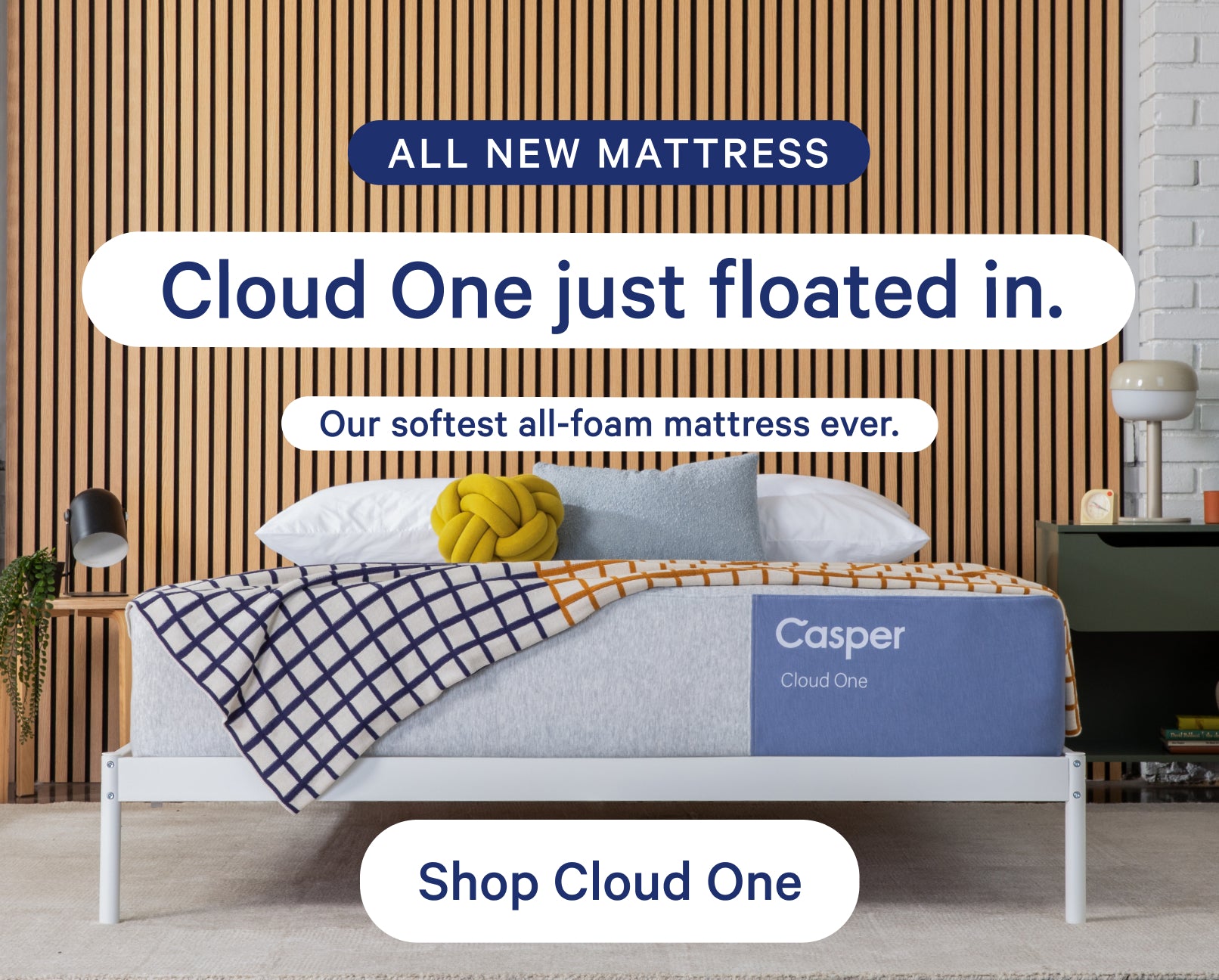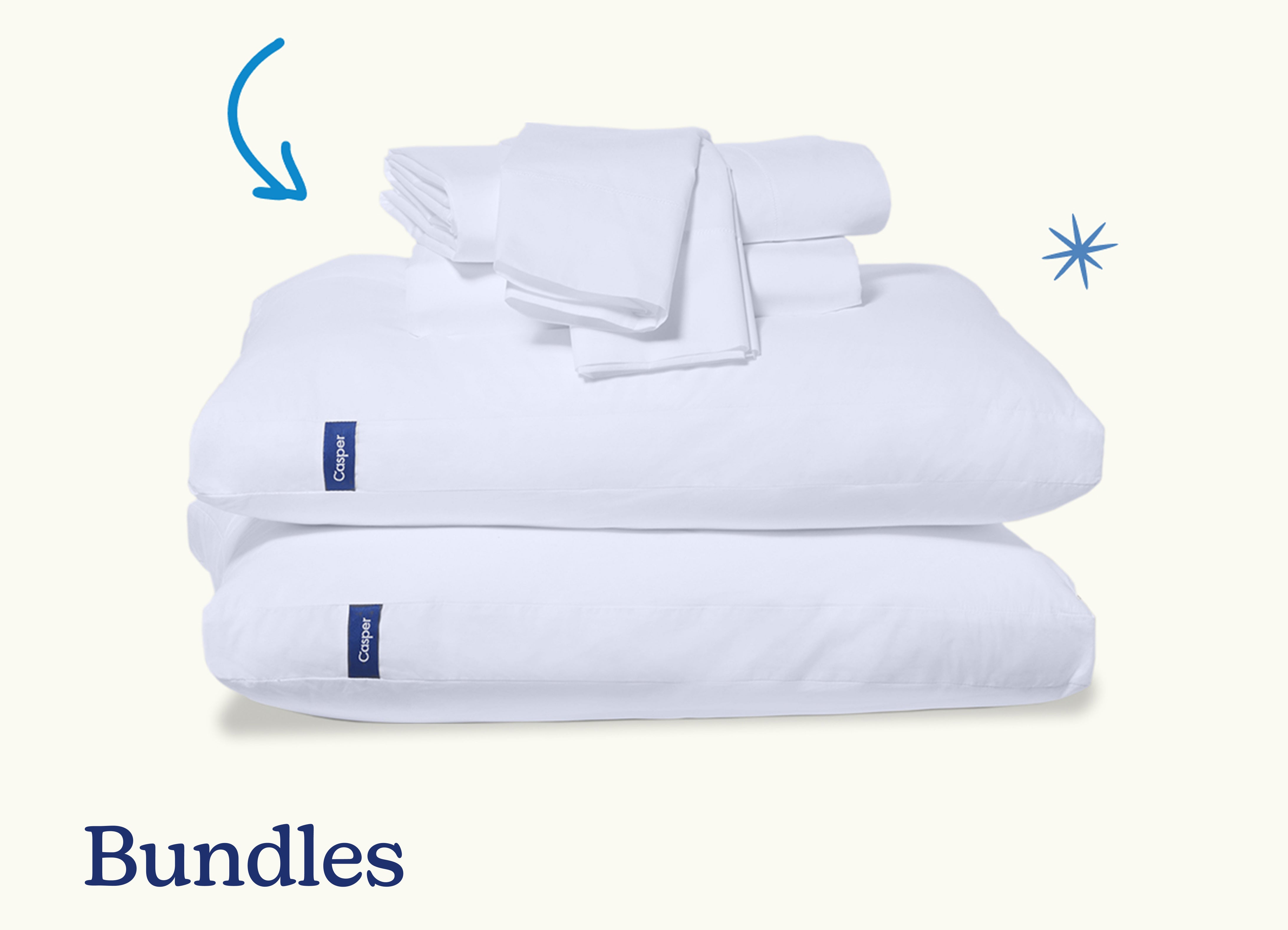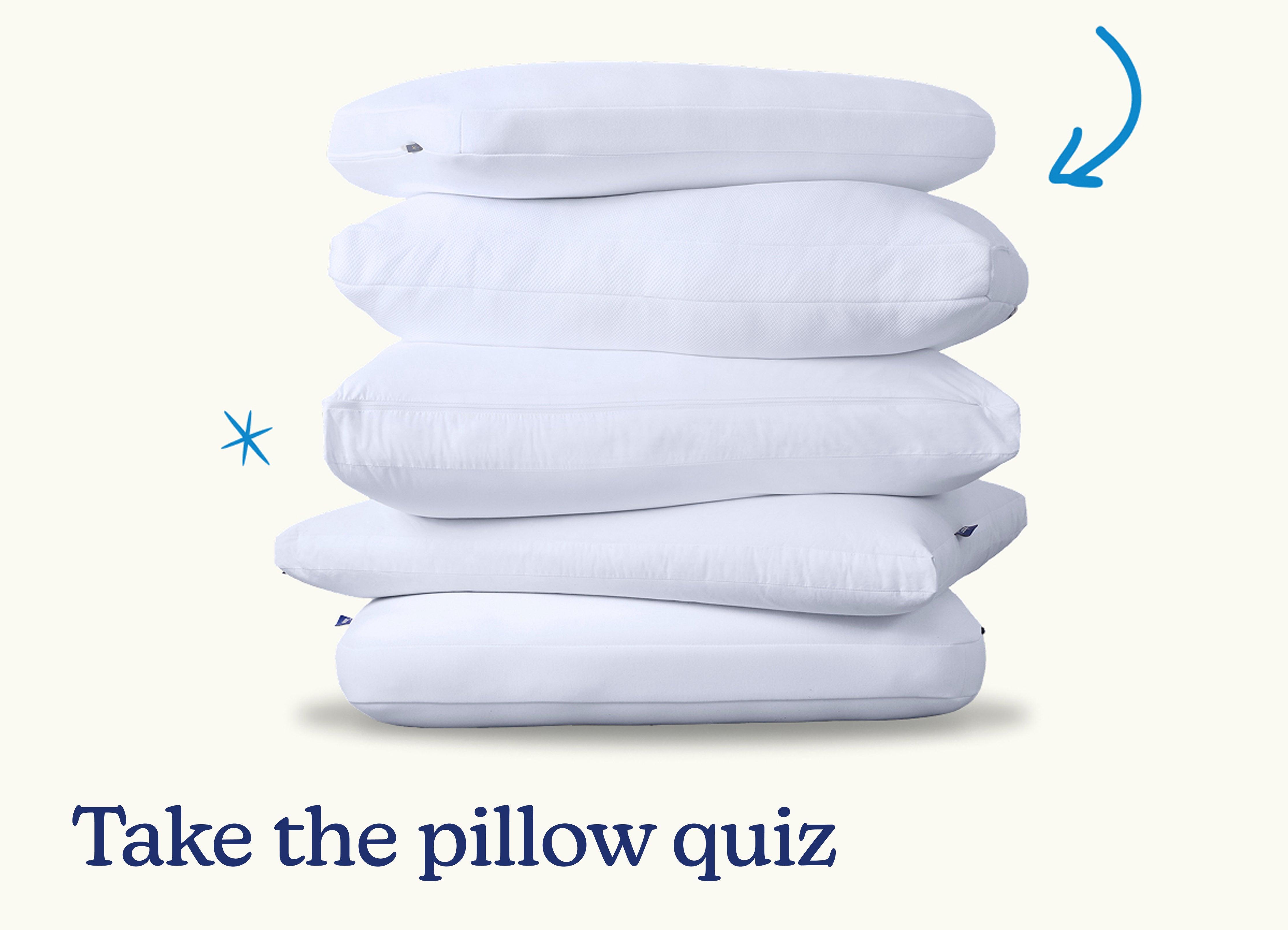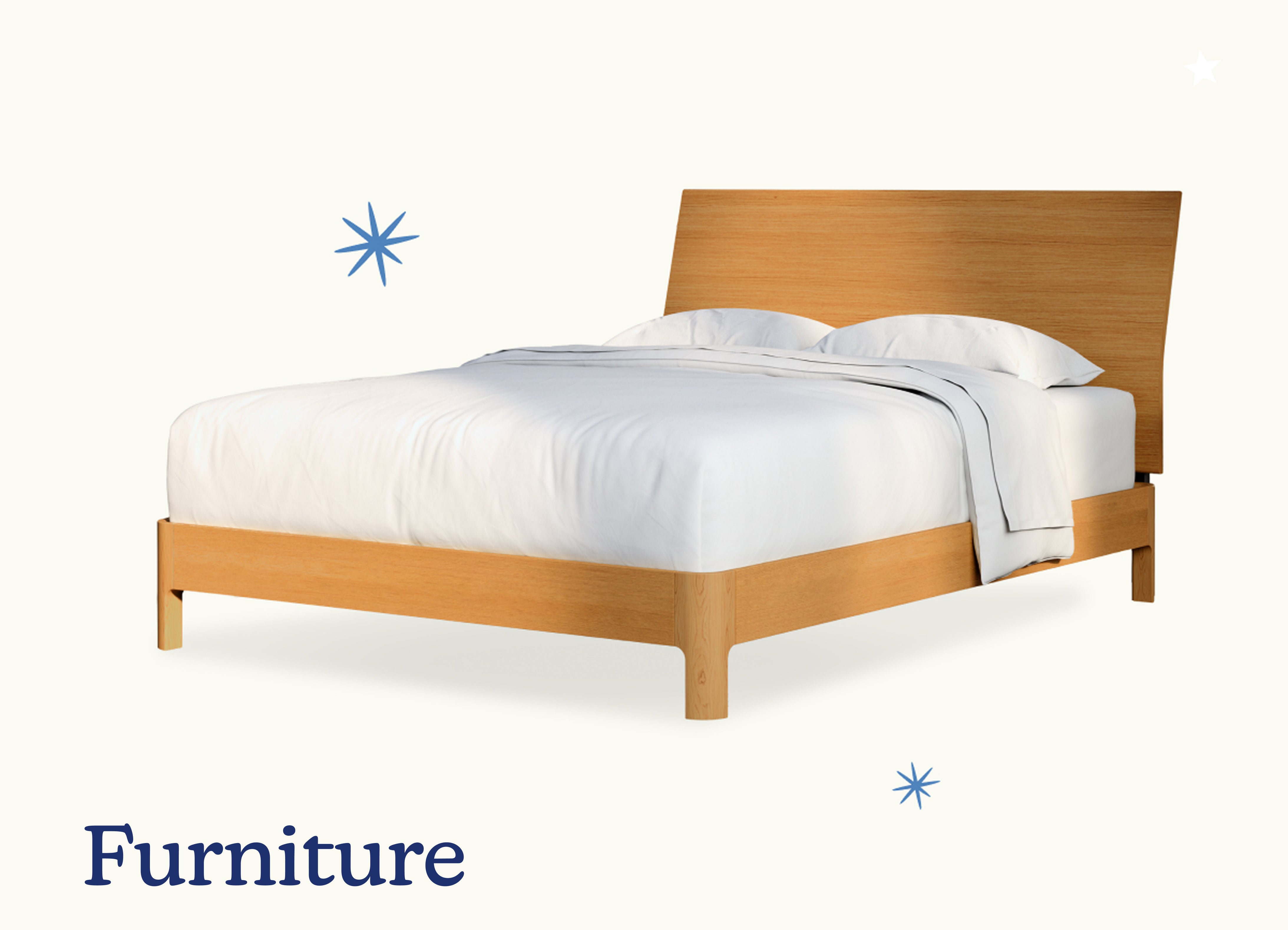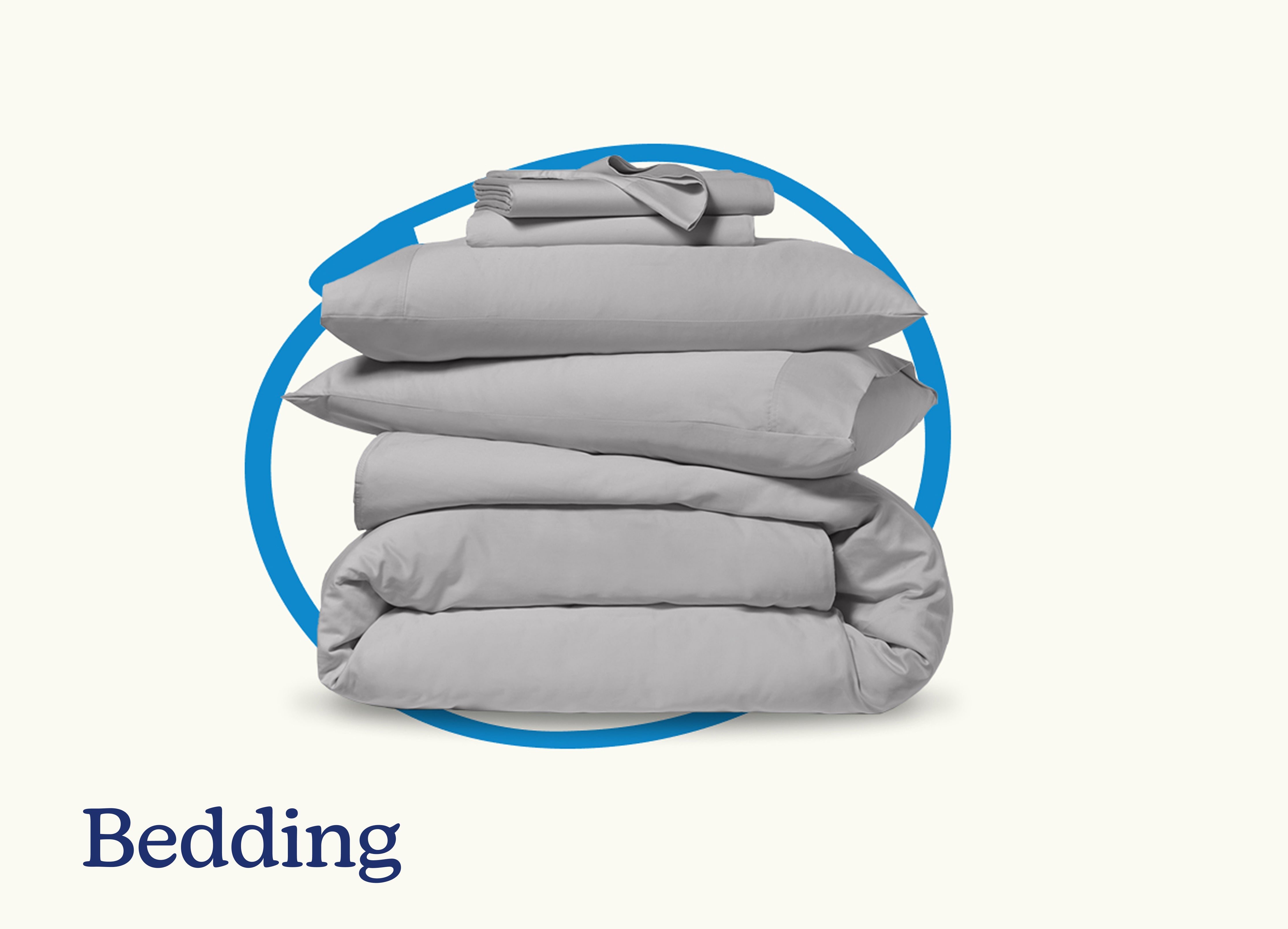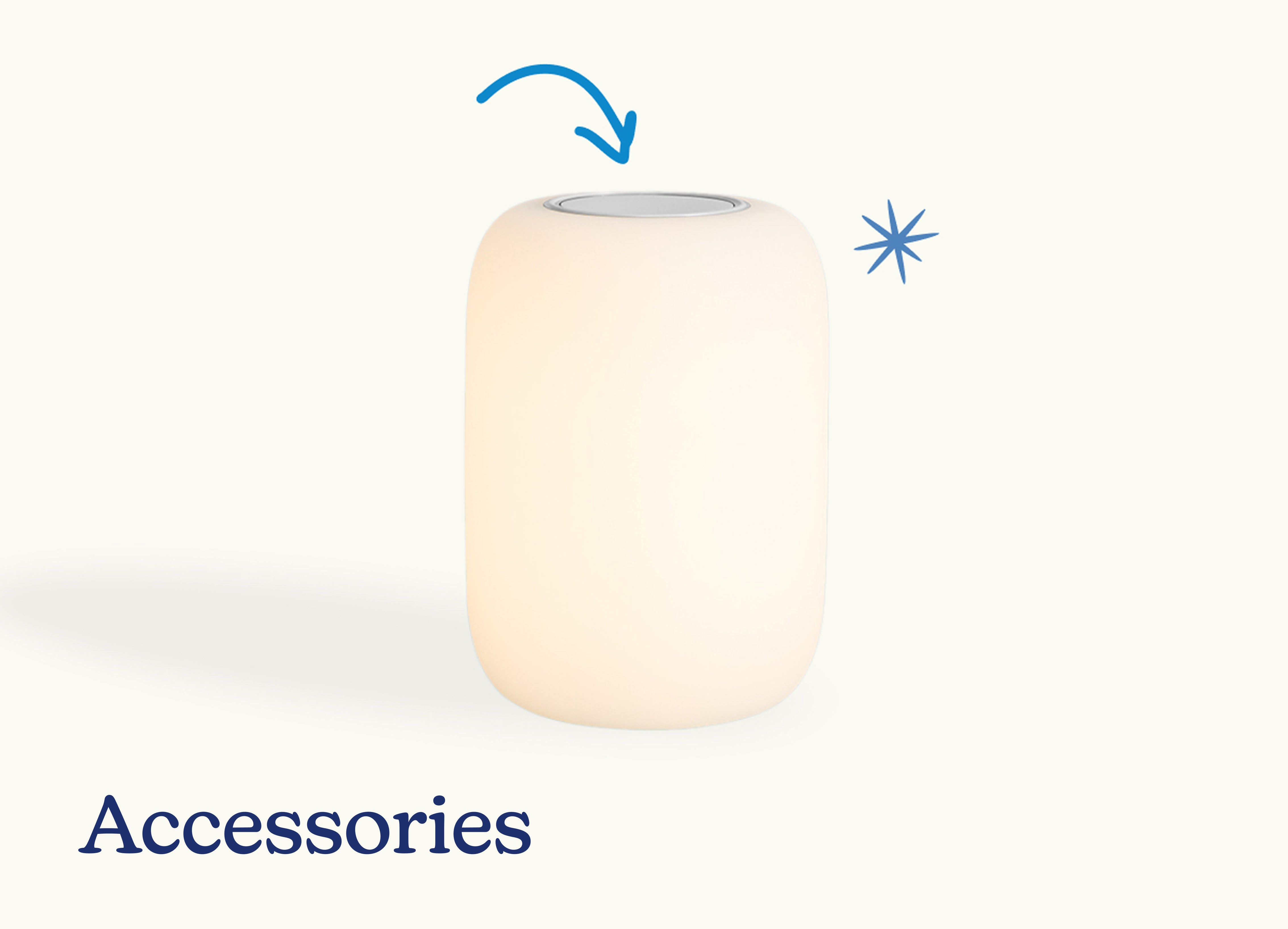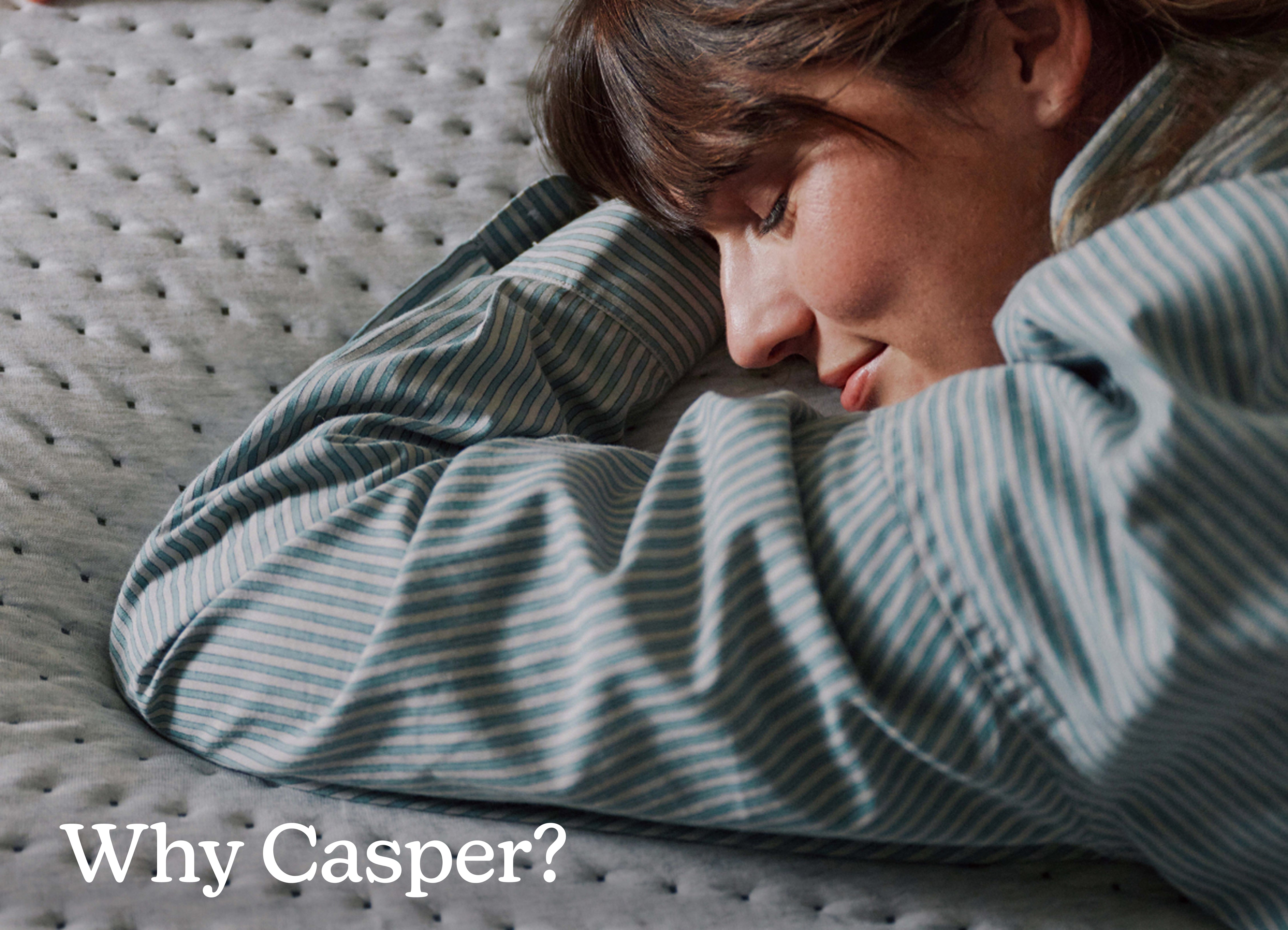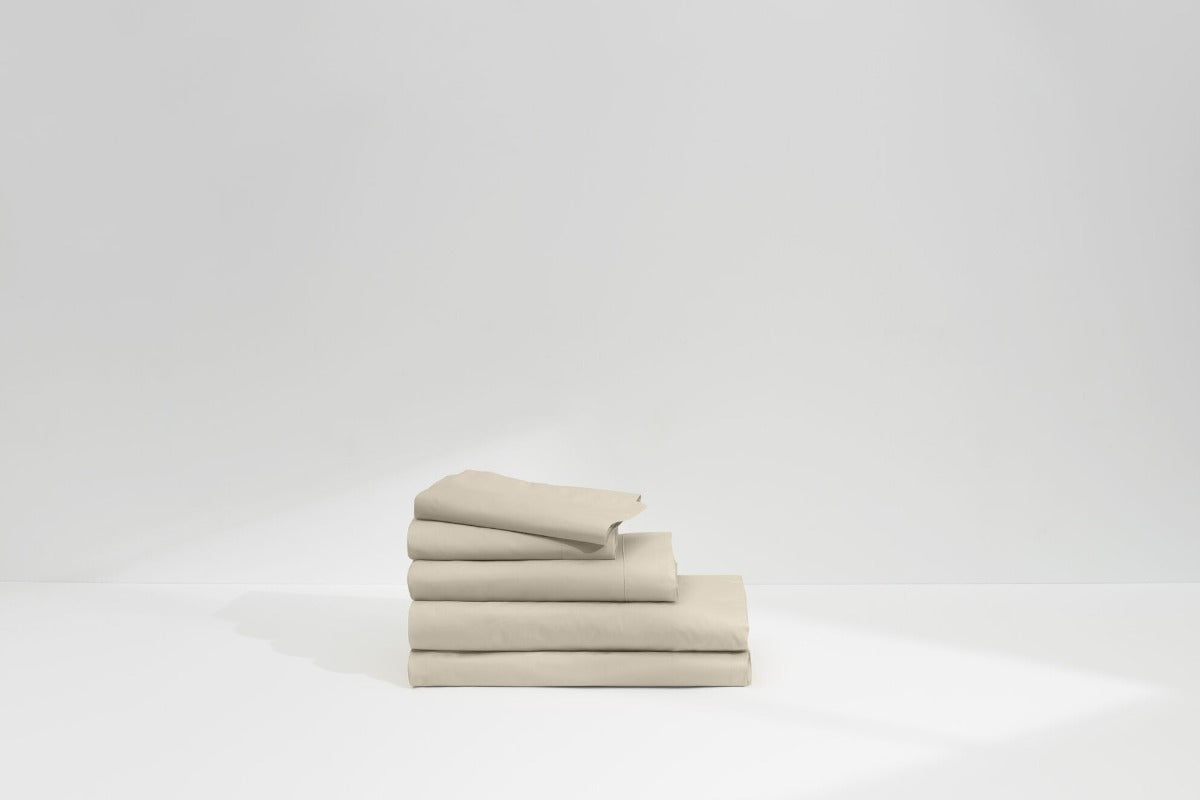Updated October 5, 2025
Percale sheets are known for their crisp, cool, and breathable feel with a matte finish, while sateen sheets are characterized by a silky, smooth texture with a subtle sheen and are generally warmer.
Choosing your bed sheets is almost as important as choosing your mattress.
If you’ve been sleeping on sheets that are too worn down, paper-thin, or irritating to your skin, it may be time to upgrade—not just for the sake of your beauty sleep but your sleep health. According to the American Sleep Association, daily practices—like sleeping in a comfortable environment—can help you avoid sleep disorders.1
Sheets are a primary factor to consider when creating a comfortable sleep environment. When shopping for a sheet set, you’ll find options made with a variety of materials: Egyptian cotton, wool, polyester, linen, rayon, or a blend. In your search for better sheets, you may come across two different sheet varieties-percale and sateen. It’s important to understand the differences between percale and sateen sheets in order to pick the ones that suit and comfort your body the most. Read on as we compare the two.
What is the Difference Between Percale and Sateen?
|
FEATURE |
PERCALE SHEETS |
SATEEN SHEETS |
|
Weave |
One-over-one-under tighter weave |
One yarn under, three or four yarns over weave |
|
Texture |
Crisp, smooth, and matte finish |
Silky, smooth with a subtle shine |
|
Feel |
Lightweight and breathable |
Heavier and luxurious |
|
Best for |
Hot sleepers, those who prefer a crisp feel |
Cold sleepers, those who prefer a silky texture |
|
Durability |
Highly durable, gets softer with each wash |
Soft from the start, but may pill or snag over time |
|
Maintenance |
Prone to wrinkling, may require ironing |
Wrinkle-resistant, easy to maintain a smooth look |
|
Heat Retention |
Breathable, does not trap much heat |
Warmer, tends to trap more heat |
Both percale and sateen sheets will elevate your nighttime routine. These are grownup bedroom accessories, not the sheets of yesteryear made of more pilling than cotton. With that said, here are the most prevalent differences between the two:
- Percale sheets are primarily composed of cotton, featuring a signature tight weave that resembles your favorite crisp white button-up.
- Sateen sheets are usually made with 100% cotton fiber, a high thread count, and lustrous feel. Think of slipping into your favorite silk robe.
Read on to determine which sheet set is right for your bed, and your head.
Percale Sheets 101

Because of the tight weave, percale sheets feel impossibly smooth to the touch.
Percale fabric sheets have a minimum thread count of 180 and are usually made with extra-long-staple or long-staple cotton, which feels softer than short-staple cotton. Percale sheets are made up of a one-over-one under weave. This tight-knit percale weave pattern makes the sheets durable so you can enjoy breakfast in bed without worrying about straining your bed linen.
Percale fabric devotees typically live in warmer climates and swear by these sheets during the sticky summer months.
IIf you’re looking to up your cotton sheet game, consider the pros of cotton percale sheets:
- Smooth
- Breathable
- Durable
- Get softer with every wash
- Low maintenance (no need to run to the dry cleaner for these)
- Natural look
If you’ve been looking for sheets that keep you cool, percale is your choice out of the two. Made with 100% organic cotton, the smooth, crisp feel of our Percale Sheets are sure to draw you into bed each night.
Percale bed sheets definitely have more benefits than drawbacks, but they may not be right for you, depending on what you’re looking for. Here are some potential cons to percale bed sheets:
- Wrinkles
- Not as soft
- Thinner
If the idea of wrinkles in your bed makes you want to scream, percale sheets may not be ideal, unless you plan to iron them out every night.
While many folks consider themselves a hot sleeper, other sleepers are completely averse to any kind of “cool” element invading their sleep space. Instead, they want to feel like they’re tucked safely away in the warmest cocoon.
If you live in a climate where temps dip below freezing, you may want to skip the freshly pressed matte finish of If you live in a climate where temps dip below freezing, you may want to skip the freshly pressed matte finish of percale bed sheets, opting for sateen fabric sheets instead.
Sateen Sheets 101

Typically made with 100% cotton fiber (polyester, lyocell, and rayon variations exist), sateen sheets look and feel luxurious, with a heavier finish that produces more sheen than matte. Sateen sheets are made with a thicker yarn size and looser weave than percale. Using a one-yard under, three or four yards over weave, sateen is able to create that cocoon-like state cold weather sleepers love.
If sateen sheets sound like the kind of bed linen you didn’t know you needed, you’re not alone. Some pros of sateen bedding include:
- Silky to the touch
- Wrinkle-resistant
- Ideal for people with sensitive skin
- Warm and cozy
- Heavier
- Machine-wash safe
Sateen sheets, like percale sheets, are available at a variety of price points, which means you can feel like royalty without breaking the bank. However, there are some cons to sateen sheets:
- Retains heat
- May pill or snag more easily
- Slippery texture
- Sheen can fade
While some sateen sheets can lose their luster over time, Casper’s Sateen Sheets have a premium, luxurious feel that will last you a long time.
The great thing about buying from Casper is we have different types of sheets for everyone. Whether you prefer a set of sheets that’s wrinkle-resistant and warm or a breathable and low maintenance, we’ve got you covered (literally).However, one of the most sought-after benefits of sateen sheets—warmth—is also its biggest drawback for sleepers who tend to run hot in the night. These sheets also may pill or snag more easily than percale because of their slippery, silky texture.
Sateen vs. Satin — Don’t Get It Confused!
Satin and sateen both use a satin-style weave that floats yarns for extra drape and smoothness—but the fibers differ. Satin typically uses filament fibers like silk or polyester, giving a glossy, ultra-slick, cool feel (and it can be slippery or snag-prone). Sateen uses cotton spun yarns, so it’s smoother than percale with a subtle, matte luster, a slightly warmer/heavier hand, and often better wrinkle resistance (though it can pill over time). Choose satin for maximum shine and glide; choose sateen if you want cotton’s breathability with a smooth, cozy finish.
Weave ≠ Material
Percale and sateen describe how threads are woven (1-over-1 vs. 3- or 4-over-1). The fiber can be cotton, lyocell, rayon, polyester, or blends—each tweaks feel, airflow, and drape. Cotton percale tends to feel crisp and airy; lyocell sateen drapes and feels cool-smooth; poly blends tend to resist wrinkles more.
Thread Count, The Right Way
For percale vs. sateen sheet thread count, there’s no magic number; quality sheets live roughly between 200–800, with ≥200 as a baseline. Higher thread counts aren’t always better—staple length, finish, and weave drive real-world feel and longevity. Our Percale Sheet Set is 300-TC by design: chosen to balance breathability, softness, and durability for hot sleepers.
Do Hotels Use Sateen or Percale?
Hotels often use both sateen and percale sheets, but the choice depends on the hotel’s quality, brand, and the specific experience they want to offer their guests.
- Percale Sheets in Hotels: Many high-end hotels prefer percale sheets because of their crisp, cool feel, which is often associated with luxury. Percale’s durability and ease of laundering make it a practical choice for hotels. The crispness of percale sheets provides a fresh and clean experience, which is something many hotels aim for.
- Sateen Sheets in Hotels: Some hotels choose sateen sheets for their luxurious, silky feel. Sateen’s slight sheen and smoother texture can give a more upscale look to the room. They are also warmer and can be more comfortable in cooler climates or during winter months.
In summary, the choice between sateen and percale sheets in hotels largely depends on the type of ambiance and guest experience the hotel aims to create. Both types of sheets have qualities that are desirable in a hospitality setting, so it’s not uncommon to find either (or both) in different hotels.
Snuggle up with Casper
From silky sheets to decorative pillows, choosing the best bedding for your lifestyle and sleep habits is one way to ensure you get the recommended 7-9 hours of sleep a night.2 If you’re tugging at your sheets or find that washing them once a week has made them unbearably rough, don’t wait to upgrade. Both percale and sateen sheets are excellent, high-quality options that are available at a variety of price points. And since they’re both made of cotton, they are some of the best sheets for allergies.
At Casper, we offer both sets of sheets. Check out our airy and breathable percale sheets if you prefer a crisp, matte finish, or scroll through the sateen fabric options if you’re looking for a bit of luxury in your life.
Our sheets are made with 100% organic cotton, so you know exactly what you’re sleeping on. No matter how many times you run them through the washer, you can rest easy knowing your Casper sheets are only getting softer with each cycle. And if you aren’t sure how often to wash your percale or sateen sheets, check out our blog on how often to wash sheets.
If you’re looking for a cozier, more restful night’s sleep, browse our collection of bed sheets, pillows, mattresses, and more today.
Sources:
- Hayneedle. Bed Sheet Material Guide. hayneedle.com/tips-and-ideas/bed-sheet-material-guide/
- Martha Stewart. How to Choose Cotton Sheets. marthastewart.com/270671/choosing-cotton-sheets.
- American Sleep Association. Lifestyle Changes. sleepassociation.org/sleep-treatments/sleep-lifestyle-changes/
- Sleep Foundation. Eygptian Cotton vs Sateen Sheets. sleepfoundation.org/bedding-information/egyptian-cotton-vs-sateen-sheets

